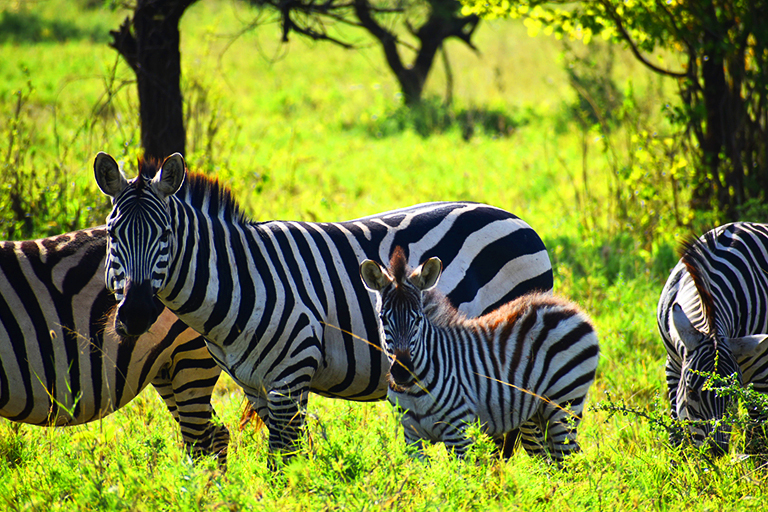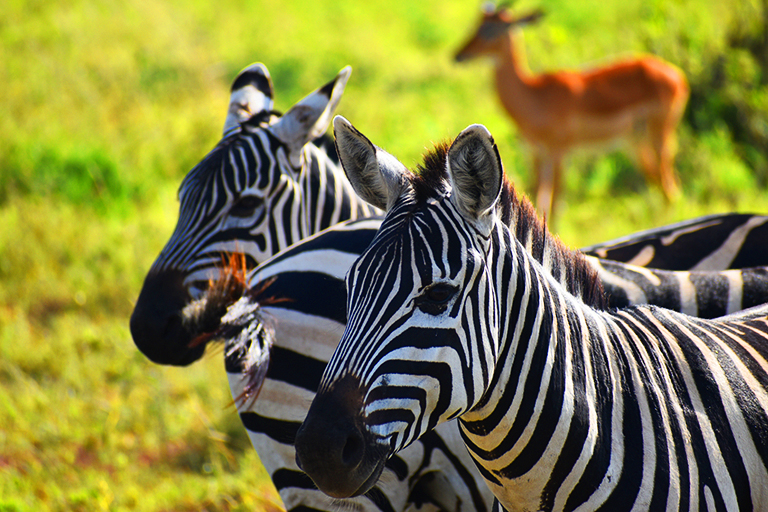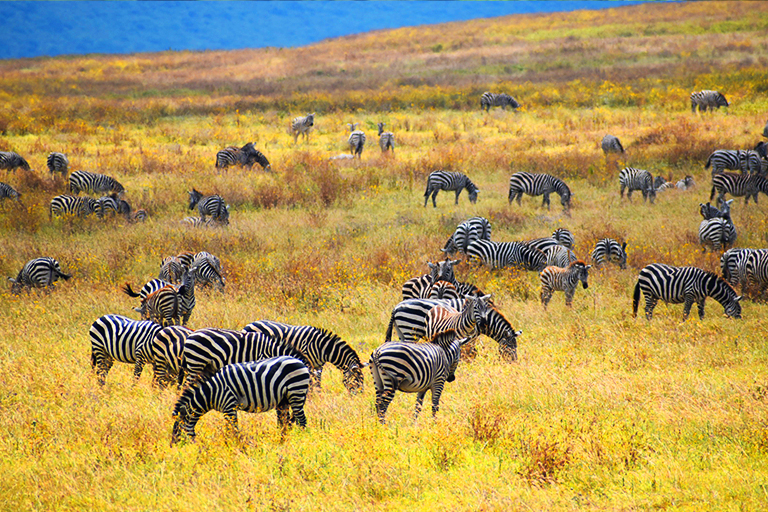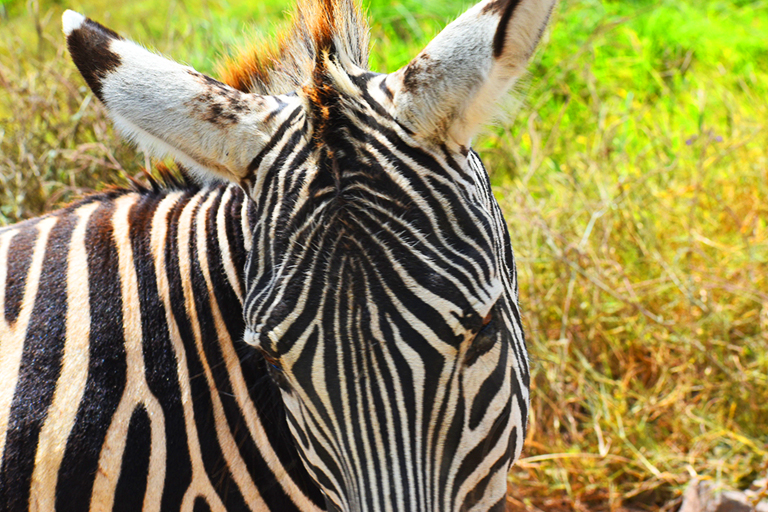The Fascinating Patterns in Zebra Skin
Black and white stripes of a zebra’s coat are a marvel of the animal kingdom. These unique patterns have puzzled researchers and we uncovering the reasons behind them.
The formation of these distinctive stripes is a fascinating interplay of genetic, evolutionary, and ecological factors.

Genetic
At the core of the zebra’s distinctive striped pattern lies a sophisticated genetic mechanism. The creation of these stripes is orchestrated by the selective expression of specific genes during the embryonic development of the zebra. This genetic directive ensures the production of melanin, the pigment responsible for the dark stripes, at certain predetermined sites on the skin, while leaving other areas lighter. The process results in a pattern of stripes that is unique to each individual zebra, akin to a human fingerprint. This individual uniqueness is not merely aesthetic but serves critical survival functions that have been honed by evolution.
The genetic basis for stripe patterns involves a complex interaction of multiple genes, which regulate not just coloration but also pattern density and distribution. The precision with which these genes are expressed is remarkable, suggesting a highly evolved genetic system. Research has identified several genes that play key roles in this patterning process, influencing everything from stripe width to the sharpness of the boundaries between black and white areas. This genetic programming is so specific that even minor mutations can lead to significant variations in stripe patterns, which can influence the zebra’s visibility to predators and mates, thus directly impacting its survival and reproductive success.

Pattern Significance
The significance of zebra stripes has long been a subject of scientific investigation that these patterns evolved primarily as a defense mechanism against predators. One of the most compelling hypotheses for the function of these stripes is that they create optical illusions known as “motion dazzle,” which confound predators during the chase. When zebras move as a herd, their stripes blend and shift dynamically, making it incredibly challenging for predators like lions to focus on a single target or accurately predict an individual zebra’s movement.
This evolutionary adaptation is particularly effective in the wild, where the ability to evade predators can mean the difference between life and death. The stripes disrupt visual perception, creating a confusing array of moving patterns that can disorient predators during chases.
In grassy savannahs and wooded areas, the play of light and shadow, along with the movement of the stripes, can mimic the flickering of sunlight through vegetation, adding another layer of camouflage. This suggests that the stripes are a multifunctional trait that has been naturally selected to offer zebras the best chance of survival in their native habitats.

Thermoregulation
The black and white stripes absorb differing amounts of sunlight, with the black stripes absorbing more heat and the white stripes reflecting it. This contrast in heat absorption is believed to create micro air currents along the zebra’s body, effectively setting up a natural air conditioning system. These air currents circulate over the skin, enhancing the evaporation of sweat and thereby cooling the zebra more efficiently than if its coat were of a uniform color.
This differential heating and cooling likely help zebras manage their body temperature amidst fluctuating environmental temperatures throughout the day. Given that zebras spend a significant portion of their time grazing in direct sunlight, such an efficient natural cooling mechanism would be a critical adaptation for survival and comfort.

Against Parasites
Protecting zebras from parasites, particularly biting flies like tsetse flies and horseflies, which are prevalent in many zebra habitats. These insects are notorious for being vectors of diseases such as sleeping sickness, which affects both animals and humans. Interestingly, is that these flies are less likely to land on striped surfaces. The theory proposed to explain this phenomenon suggests that the high contrast between the black and white stripes disrupts the visual system of these flies, making it difficult for them to land accurately.
The stripes may confuse the flies’ motion detection mechanisms, which are tuned to recognize large, uniformly colored areas as landing zones. By breaking up the zebra’s outline, the stripes interfere with this visual processing, making zebras a less attractive target compared to other animals. This biological defense mechanism highlights a fascinating aspect of evolutionary adaptation, where physical traits develop not only for survival against predators but also as a countermeasure against smaller but equally dangerous threats like parasitic insects.

Social Selection
Stripes might also significantly influence social and sexual selection within zebra populations. The unique patterns of each zebra’s stripes could serve as a visual signal used in mate selection, similar to how other animals use physical traits to attract partners. The contrast, and even the symmetry of an individual’s stripes could be indicators of genetic health and overall fitness. Such visual cues could help zebras select the most genetically suitable mates, ensuring the propagation of strong genetic traits through successive generations.
The specifics of how zebras use these stripe patterns in social interactions and mate selection are still being explored, but these patterns play a role beyond mere camouflage. For instance, more vibrant and well-defined stripes may be more appealing to potential mates, suggesting robust health and good genetic quality. This aspect of zebra stripes adds an intriguing layer to understanding the complex social dynamics and reproductive strategies in these iconic animals.

The unique patterns on zebra skin arise from a complex mix of genetic factors and evolutionary adaptations. These stripes serve multiple purposes, from confusing predators and regulating body temperature to deterring parasites and facilitating social interactions. Simply Amazing!
